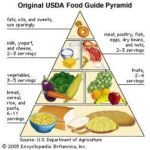Introducing solid foods to your baby is a significant milestone. Navigating the world of purees, textures, and nutritional needs can be overwhelming. This guide will provide you with a comprehensive overview of what foods can a 6-month-old eat, how much to feed them, and essential tips for a smooth transition to solids.
Is Your Baby Ready for Solid Foods?
Before diving into what foods can a 6-month-old eat, it’s crucial to determine if your baby is ready. While 6 months is a common starting point, every baby develops at their own pace. Look for these signs of readiness:
- Head Control: Can hold their head steady and upright.
- Sitting Upright: Can sit upright in a high chair with support.
- Weight Gain: Has doubled their birth weight and weighs at least 13 pounds.
- Mouth Control: Can close their mouth around a spoon.
- Swallowing Skills: Can move food from the front to the back of their mouth without pushing it back out.
If your baby exhibits these signs, it’s likely they are ready to explore the world of solid foods. Consult with your pediatrician to confirm and address any concerns.
First Foods for Your 6-Month-Old
When considering what foods can a 6-month-old eat, start with simple, single-ingredient purees. This allows you to identify any potential allergies or sensitivities. Here are some excellent first food options:
- Pureed Vegetables: Sweet potatoes, carrots, squash, peas, and green beans are mild and easily digestible.
- Pureed Fruits: Apples, bananas, peaches, pears, and avocados offer natural sweetness and essential nutrients.
- Pureed Meats: Chicken, turkey, and beef are excellent sources of iron, which is crucial for development.
- Iron-Fortified Cereal: Opt for oat or barley cereal instead of rice cereal due to concerns about arsenic levels.
- Unsweetened Yogurt: Provides calcium and probiotics for a healthy gut.
Feeding Schedule and Amounts
At 6 months, breast milk or formula remains the primary source of nutrition. Solid foods are introduced gradually to supplement their diet. Here’s a general guideline for feeding amounts:
- Breast Milk or Formula: 28 to 32 ounces per day (four to six feedings).
- Solid Food: Start with 1 to 2 tablespoons of pureed food once or twice a day. Gradually increase the amount to 3 to 5 tablespoons as your baby adjusts.
Remember to observe your baby’s cues. If they turn their head away, refuse to open their mouth, or seem disinterested, don’t force them to eat. Every baby has different appetites, and it’s essential to respect their fullness signals.
Introducing New Foods: The Four-Day Wait Rule
When introducing what foods can a 6-month-old eat, follow the four-day wait rule. This involves introducing a new food every four days. This allows you to monitor for any allergic reactions or sensitivities. Common signs of allergies include:
- Rash
- Hives
- Vomiting
- Diarrhea
- Difficulty breathing
If you notice any of these symptoms, discontinue the new food and consult your pediatrician immediately.
Beyond Purees: Exploring Textures
As your baby becomes more comfortable with purees, you can gradually introduce thicker textures. This can include mashed foods, finely chopped soft foods, and eventually, soft finger foods. Introducing a variety of textures helps your baby develop their chewing and swallowing skills.
Foods to Avoid
While exploring what foods can a 6-month-old eat, it’s equally important to know what to avoid. Certain foods pose a choking hazard or contain substances harmful to infants:
- Honey: Avoid honey until after your baby’s first birthday due to the risk of botulism.
- Cow’s Milk: Don’t give cow’s milk as a primary drink until age 1.
- Grapes, Raisins, and Popcorn: These are choking hazards and should be avoided.
- Nuts and Seeds: Avoid whole nuts and seeds due to choking hazards and potential allergies.
- Added Sugars and Salt: Limit processed foods with added sugars and salt, as they provide no nutritional value.
Tips for Successful Feeding
- Create a Positive Environment: Make mealtime a fun and relaxed experience.
- Offer a Variety of Foods: Introduce a wide range of fruits, vegetables, and proteins to ensure a balanced diet.
- Be Patient: It may take multiple attempts for your baby to accept a new food.
- Let Your Baby Lead: Pay attention to your baby’s cues and avoid forcing them to eat.
- Consult Your Pediatrician: Discuss any concerns or questions you have about your baby’s diet with your doctor.
Conclusion
Introducing solid foods is an exciting journey for both you and your baby. By understanding what foods can a 6-month-old eat, following safety guidelines, and being patient, you can help your baby develop healthy eating habits that will last a lifetime. Enjoy this special time and celebrate each milestone along the way.
References
- American Academy of Pediatrics (AAP)
- U.S. Department of Agriculture (USDA)
- Stanford Children’s Health

